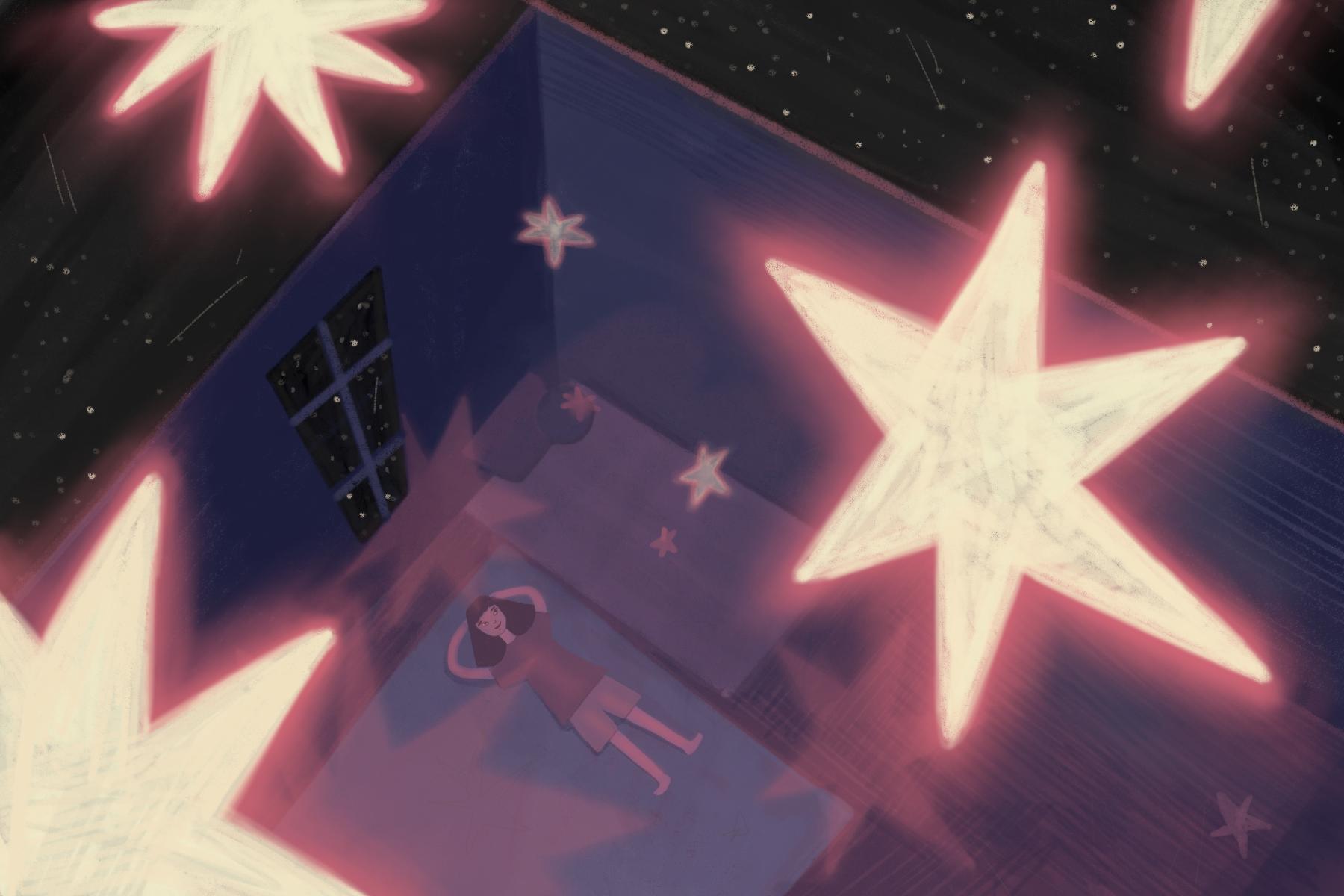On July 22, I walked out of the house at midnight, camera and tripod in hand, hoping to go stargazing and catch a few snapshots of the Comet NEOWISE. To my disappointment, the entire sky was clouded over with fog. I couldn’t even see the moon, much less the fuzzy specter of a comet 64 million miles away.
Comet NEOWISE has made big news since it’s the first “great comet” since 1997’s Hale-Bopp. A great comet refers to a comet that is bright enough to be seen by the naked eye — even in light-polluted metropolitan areas. Even the great 2007 McNaught comet in the Southern Hemisphere wasn’t as brilliant.
NEOWISE, in particular, is a surprise since it was only just discovered by NASA in late March. Its official name is C/2020 F3 or NASA’s Near-Earth Object Wide-field Infrared Survey Explorer — NEOWISE for short. The comet has been visible since July throughout the Northern Hemisphere. Although it was closest to Earth on July 22, it’s still possible to catch a glimpse of the comet for a while longer. After the sun sets, look underneath the Big Dipper constellation, and you might just catch a glimpse of a fuzzy star with a tail. For a better view, you could try viewing the comet through binoculars. Once the Comet NEOWISE disappears from view, though, it won’t be making a return to Earth for another 6,800 years.
The phenomenon of Comet NEOWISE has inspired many new stargazers. It’s an excellent reminder of the mostly forgotten pastime. With 80% of the global population impacted by light pollution, it’s hard to remember that there are billions upon billions of stars in the sky above.
Stargazing opens up a whole new world of possibilities and wonder. The sky above is the same sky that countless generations of people have viewed. Plus, the night sky, unlike anything else, is a living record of the past. Many of the stars in the sky are millions, maybe even billions, of light-years away, meaning that the light we see in the sky left its star a long time ago. Some of the lights in the sky are from before our solar system even existed. Stargazing allows us to connect to that sense of wonder and to history more distant than anything else. Everywhere else on Earth has changed in one way or another, but the bulk of space is untainted by humankind. It truly is the last frontier, and stargazing is a reminder of that.
Stargazing also opens the window to countless stories. Today, the International Astronomical Union recognizes 88 official constellations. Many of these constellations stem from Greek mythology and have an elaborate story behind their creation. But these are just the stories behind the official constellations. Over the history of mankind, countless cultures have stargazed at the very same skies and came up with different stories for how the stars and other celestial objects came to be. After all, the sky was a mystery for most of human history. Even with all the knowledge humans have acquired, space is still a mystery due to its vastness.
In an increasingly busy world, it’s easy to lose sense of who we are. Stargazing remedies that, too. Not only is it calming to gaze up at something so constant, but it’s also a reminder of how small we are against the ever-expanding universe. For better or worse, stargazing puts your life in perspective. Against the 13.8-billion-year-old universe, our lives are only a short blip in the scheme of history.
If you’re up for some stargazing, or if you missed out on seeing the Comet NEOWISE in person, never fear! There are still plenty of astronomical events coming up to fulfill your stargazing appetite.
1. Meteor Shower
Meteor showers are very common, usually with two or more separate occurrences somewhere in the world each month. That said, one of the best upcoming meteor showers to observe would be the Perseids Meteor Shower. The Perseids occurs annually in the summer and is visible worldwide. This year, the meteor shower will peak on Aug. 11, 12 and 13, although it’s been producing meteors since mid-July and will continue to be visible over a week after its mid-August high point. Meteor showers are beautiful to witness, displaying a natural light show unlike any other. For a list of other meteor showers going on for the rest of the year, check out Sea and Sky’s celestial events calendar.
2. Penumbral Lunar Eclipse
A lunar eclipse occurs during a full moon when the Earth is perfectly lined up between the sun and the moon. A penumbral lunar eclipse is when the penumbral, or the outer shadow of Earth, falls on the moon. A penumbral lunar eclipse might not be as impressive or awe-inducing as a total lunar eclipse, but it can still be a wonderful event to witness. Most people aren’t even able to tell that a penumbral lunar eclipse is going on because the moon will simply look darker than usual. That makes it all the more satisfying when you’re observant enough to be able to tell that one is occurring.
The penumbral lunar eclipse will occur on Nov. 30. Keep the date marked on your calendar if you’ll be in North America, the Pacific Ocean or northeastern Asia.
3. Total Solar Eclipse
This one’s exciting. Solar eclipses occur when the moon in its new moon phase passes between the Earth and the sun. Total solar eclipses are relatively rare and only occur, on average, once every 18 months. This year’s total solar eclipse will occur on Dec. 14. The total solar eclipse will be visible in parts of southern Chile and southern Argentina. A partial eclipse will be visible in southern South America, the southeastern Pacific Ocean, and the southern Atlantic Ocean. Hopefully, you’ll be in one of those places to catch a glimpse when December rolls around. If not, it’s not uncommon for people to travel to see a total solar eclipse considering how rare it is!
Whether you’re stuck in a city or you’re away from light pollution, take the time tonight to gaze up at the sky. You might see many stars, or maybe you won’t see anything at all because of the fog blanketing the sky. Whatever you might see, just know that the night sky is a reminder that you’re not alone. Countless people have looked up at the same sky before you, and countless more will after you, too.














